Family Joins Experts to Shed Light on Acute Flaccid Myelitis
9.29.2020 | Seattle Children's Press Team
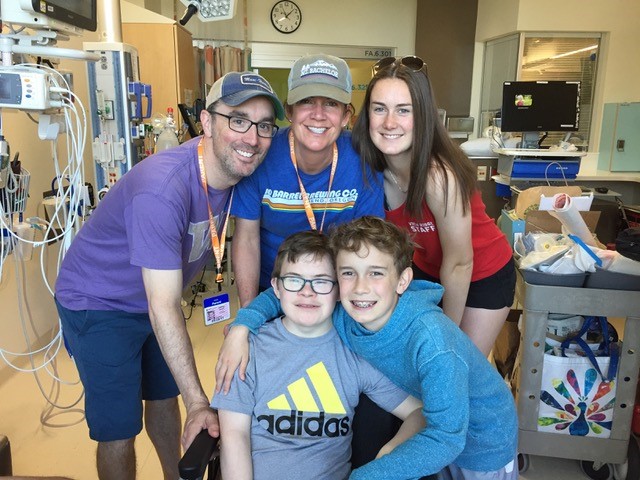
It’s been over three years since Maxford Brown woke up one morning not feeling well. Neither Maxford nor his family had any idea that it would mark the beginning of a life-changing journey with a rare, but serious neurological condition called acute flaccid myelitis, or AFM.
“I suggested it might help for him to lay down. When I went to wake him up, he had lost all ability to move on his own,” remembered his mom.
In a state of shock, Tracy Brown called their pediatrician to describe what had happened to her son.
“I remember asking our doctor if we should make an appointment,” she said. “That’s when they told me we needed to get Maxford to Seattle Children’s Emergency Department right away.”
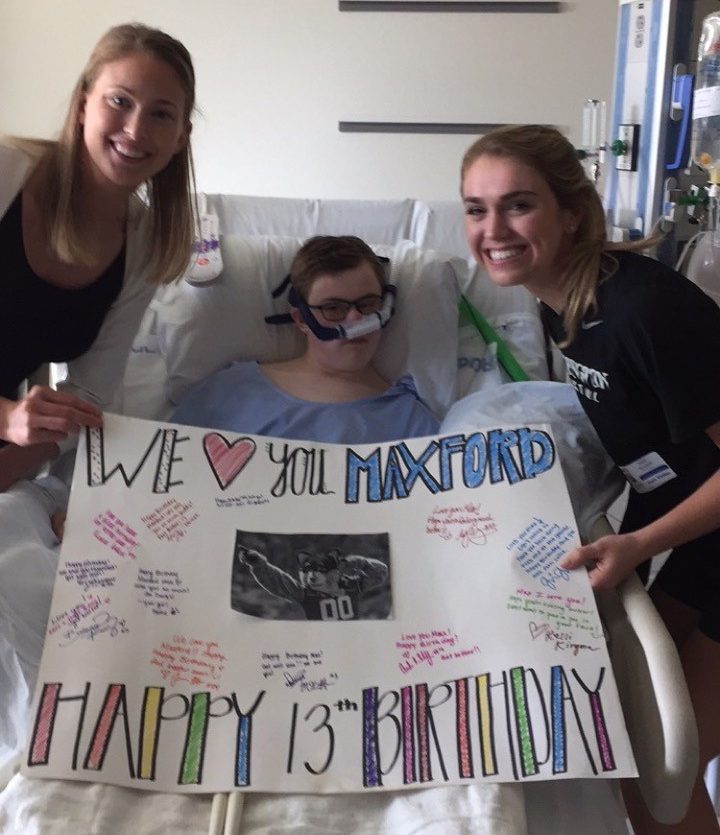
A diagnosis begins long road to recovery
Once at Seattle Children’s, Maxford underwent several tests, including magnetic resonance imaging (MRI) of his spinal cord. While his care team searched for answers, he began having difficulty breathing. He received care in the Pediatric Intensive Care Unit (PICU) to treat his symptoms.
About a week later the team confirmed the diagnosis: AFM. The Browns met with Dr. Catherine Otten, a neurologist in Seattle Children’s Neurosciences Center to discuss Maxford’s care and recovery.
“Like all children with AFM, Maxford needed care in the hospital during the acute phase of his illness,” Otten said. “While there’s no cure or proven treatment for AFM, we must provide care that supports children with AFM because weakness can affect their breathing, eating and mobility. Later, they may begin intensive rehabilitation followed by outpatient physical therapy and occupational therapy to help the child regain as much function as possible.”
After spending three weeks in the PICU, which included his thirteenth birthday celebration, Maxford started an in-hospital rehabilitation program. Soon, he was able to go home.
“Maxford was still in a wheelchair when we left the hospital,” Brown said. “There were a ton of unknowns. We dropped everything and spent the next year focused on his therapy. Maxford battled his way to a walker. He is now walking in a brace. Still, he can’t use his left hand and has weakness in his left leg.”
Finding the hope
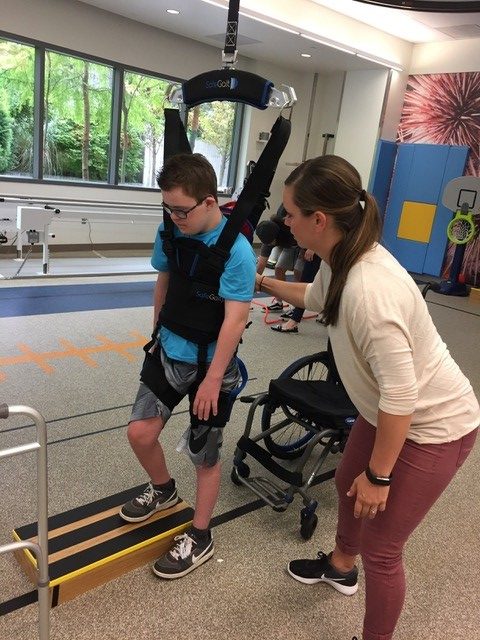 Brown says as heartbreaking as the experience has been for their family, she is grateful for those at Seattle Children’s who have been by their side along their journey.
Brown says as heartbreaking as the experience has been for their family, she is grateful for those at Seattle Children’s who have been by their side along their journey.
“Completely unrelated to AFM, Maxford was born with Down syndrome. A small part of me was concerned he wouldn’t receive equal treatment or his therapists wouldn’t push him as hard because of it,” she said. “That couldn’t have been further from reality. From the minute we walked in the door, Seattle Children’s cared for and respected us. We have had nothing but amazing care.”
She remembers the PICU nurse that was always looking out for Maxford and recalls how one of Maxford’s physical therapists, Sarah Olsen, was always finding creative ways to motivate him to work hard in their sessions.
“Despite reminding me daily he hates AFM, Maxford is so determined to keep getting better,” Brown said. “I’m always blown away when he is able to do something new. It’s the positivity and joy he brings to it all that has helped me find the hope again.”
What to know about AFM
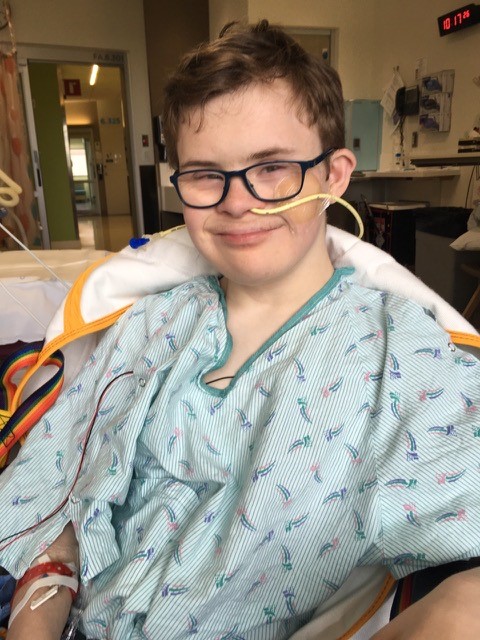 Maxford’s case is just one of over 600 recorded in the U.S. since 2014. Since then, rates of AFM have peaked every two years. In August, the Centers for Disease Control and Prevention (CDC) alerted doctors and parents to an expected peak in AFM again this year.
Maxford’s case is just one of over 600 recorded in the U.S. since 2014. Since then, rates of AFM have peaked every two years. In August, the Centers for Disease Control and Prevention (CDC) alerted doctors and parents to an expected peak in AFM again this year.
Otten acknowledges that the unknowns and serious nature of AFM can be daunting for parents but emphasizes that it’s very rare. It’s good for parents to be aware of the early signs of AFM.
“I don’t want parents to worry every time the child has a cough or cold, but I do want them to worry if they see limb weakness,” Otten said. “AFM can cause limb weakness in particular, but also facial weakness, trouble swallowing, difficulty speaking and neck pain. Those are warning signs that should prompt them to seek immediate care in an Emergency Department.”
Many children will have a cold or flu-like illness prior to the onset of AFM. In recent years, researchers and public health experts have linked cases of AFM to a virus called enterovirus D68 (EV-D68). Otten cautions that while there is an established strong correlation, clear causation has not been fully established between EV-D68 and AFM.
“Not every patient with AFM will have enterovirus D68 and most patients who have enterovirus D68 won’t have AFM,” she said. “It’s a connection that the research community is trying to understand better.”
Otten says the same precautions used to prevent the spread of the novel coronavirus also apply to helping limit the transmission of EV-D68 and other viruses in the community.
“Practicing good handwashing hygiene, limiting your physical contacts and getting regular vaccinations on time are all prevention strategies recommended for the viral infections that are associated with AFM,” she said.
What we’re learning about AFM
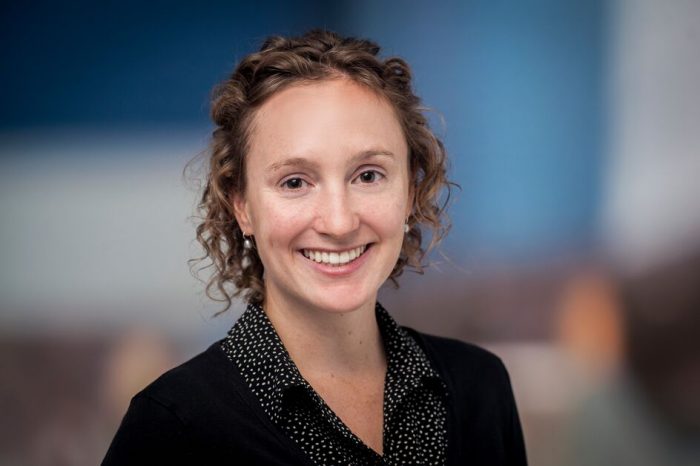 Otten and Seattle Children’s are collaborating with the CDC and the Washington State Department of Health to find more answers. Together with others across the country, they are tracking AFM cases to understand when these cases occur and how they may be associated with viral patterns.
Otten and Seattle Children’s are collaborating with the CDC and the Washington State Department of Health to find more answers. Together with others across the country, they are tracking AFM cases to understand when these cases occur and how they may be associated with viral patterns.
They are collecting samples and reports from children diagnosed with AFM to get more information about the true causation and how to better prevent it. Those involved with the long-term care of patients with AFM are also starting to understand the wide range of severity of initial symptoms and long-term outcomes.
“About half of children with AFM have cases so severe they need to be in an ICU,” Otten said. “We also see that some children recover better than others, and our hope is that ongoing research will not only help us predict who will have more severe cases, but also help us understand what we can do to promote better recovery for every child with AFM.”
Seattle Children’s physiatrist, Dr. Kelly Pham, manages the initial rehabilitation for children with AFM.
“From a functional standpoint, children with AFM can be very different,” she said. “Some still require a power wheelchair for mobility, while others are very mildly impacted with just one extremity involved. In rehabilitation, we follow children with any and all functional impairments related to AFM. We are the ‘doctors of function,’ doing everything that we can to improve a child’s independence.”
A long-term clinic for AFM recovery
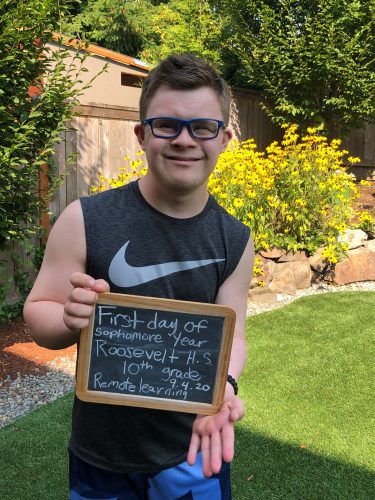 Maxford, now 16, is continuing his care in Seattle Children’s Brachial Plexus Clinic. The clinic provides a full spectrum of care from outpatient therapy to surgical options for children with complex nerve issues and peripheral nerve conditions. Because AFM affects the nerves, the clinic has started following children recovering from the condition to manage their long-term care.
Maxford, now 16, is continuing his care in Seattle Children’s Brachial Plexus Clinic. The clinic provides a full spectrum of care from outpatient therapy to surgical options for children with complex nerve issues and peripheral nerve conditions. Because AFM affects the nerves, the clinic has started following children recovering from the condition to manage their long-term care.
“Patients receive assessments with a surgeon, a rehabilitation physician and physical and occupational therapists,” said Dr. Marisa Osorio, a physiatrist in the clinic. “These providers partner with the patient’s community therapists to determine the best interventions to maximize their recovery.”
Non-surgical therapies, like physical and occupational therapy, are generally pursued first. Doctors are also exploring surgery to reconstruct the nerves with the goal of determining the most appropriate situations of when to proceed with surgery.
“The difficulty is predicting what will recover on its own and what won’t,” said the clinic’s medical director and surgeon, Dr. Raymond Tse. “Ultimately, there can be other surgical options to improve function that aren’t time-dependent. We consider each of these as a team in order to tailor treatment for each child’s situation.”
Tse recently saw Maxford and his mom in the clinic to talk through additional options to improve the function of Maxford’s left hand.
“A lot of credit goes to Maxford for his progress this far,” Tse said. “There are many remaining options we have to get his hand functioning better. I’m hopeful there’s a brighter road ahead for Maxford with real gains that he can achieve.”